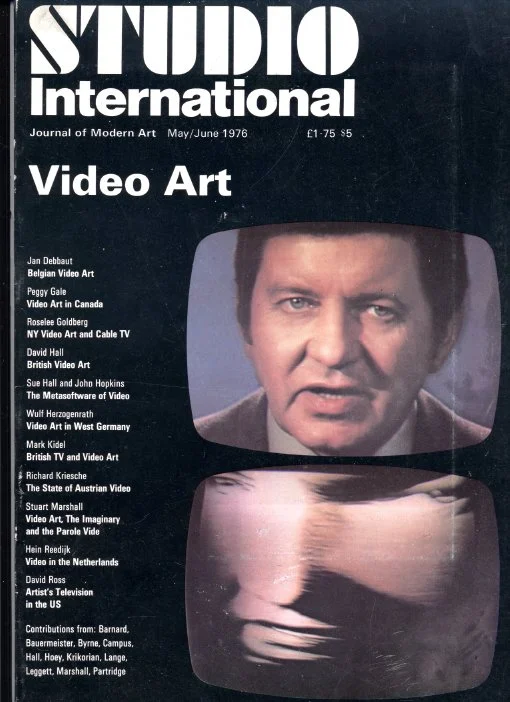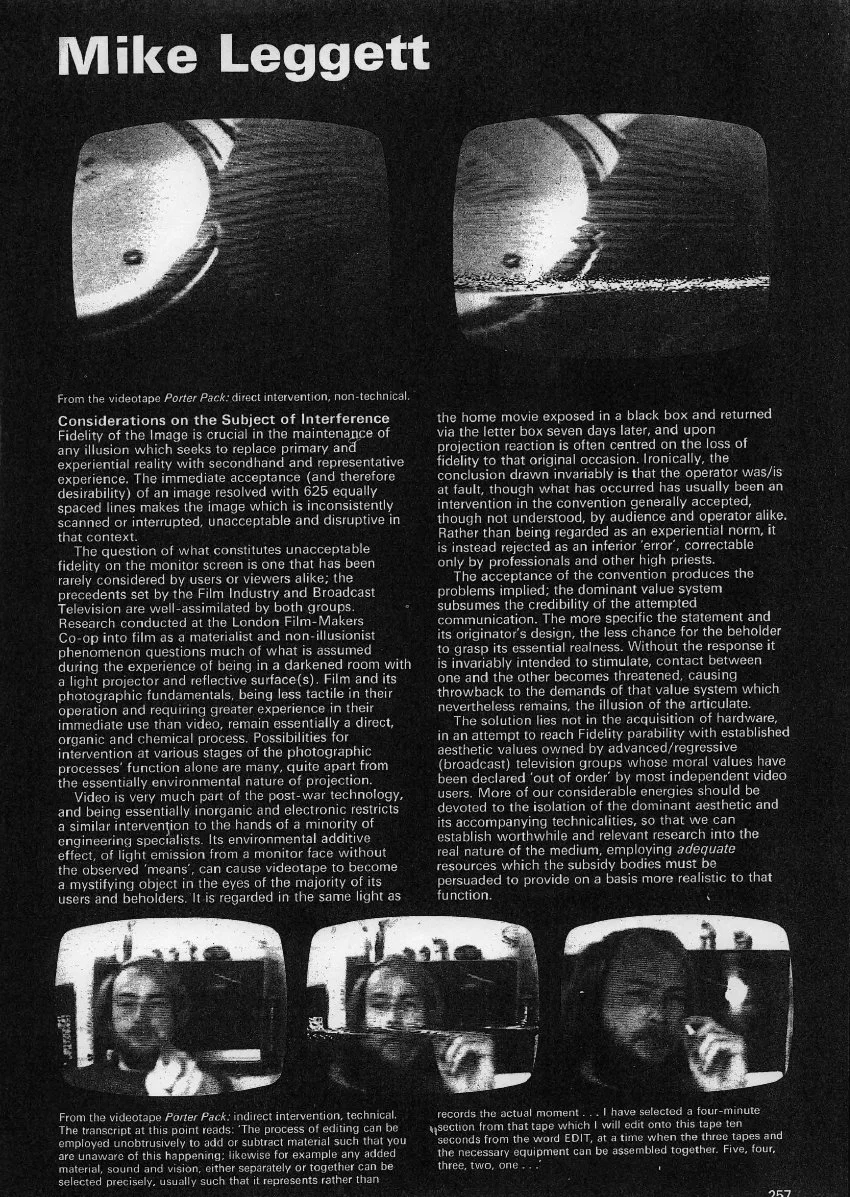:Considerations on the Subject of Interferene
Article, Studio International Video special Issue May/June 1976
The Video special issue of Studio International, published in London and edited by Richard Cork, was a landmark issue in effecting the acceptance of video as an art form in Britain, some years behind the rest of the world. Following The Video Show at the Serpentine Gallery in the previous year, a group of practitioners were asked to submit a one-page article. My contribution referred to an earlier work where the physical manipulation of the videotape passing over the recorder head created immediate breakup of the image recording the procedure. The image of intervention references 'television interference' (caused by poor broadcast reception) as a rhetorical statement about television state-licensed monopolies.
Considerations on the subject of interference fidelity of the image is crucial in the maintenance of an illusion which seeks to replace primary and experiential reality with second hand and representative experience. The immediate acceptance and therefore desirability of an image resolved with 625 equally spaced lines makes the image which is inconsistently scanned or interrupted as unacceptable and disruptive in that context. The question of what constitutes unacceptable fidelity on the monitor screen is one that has been rarely considered by users or viewers alike; the precedents set by the film industry and broadcast television are well assimilated by both groups. Research conducted at the London Film makers Co-op into film as a materialist and non illusionist phenomena questions much of what is assumed during the experience of being in a darkened room with a light projector and reflective surfaces. Film and its photographic fundamentals being less tactile in their immediate use than video, remain essentially a direct organic and chemical process. Possibilities for intervention at various stages of the photographic process is function alone are many, quite apart from the essentially environmental nature of projection. Video is very much part of the post war technology and being essentially inorganic and electronic restricts intervention toa minority, in the hands of engineering specialists. It's environmental edited effect of light emission from a monitor face without the observed means, can cause videotape to become a mystifying object in the eyes of the majority of its users and beholders. It is regarded in the same light as the home movie exposed in a black box and returned via the letterbox 7 days later and Upon projection, reaction is often centred on the loss of fidelity to that original occasion. Ironically the conclusion drawn is that the operator was or is at fault, though what has occurred has usually been an intervention into the convention generally accepted though not understood by audience and operator alike. Rather than being regarded as an experiential norm it is instead rejected as an inferior error correctable only by professionals and other high priests. The acceptance of the convention produces the problems implied; the dominant value system subsumes the credibility of the attempted communication the more specific statement and it's originator'sdesign, the less chance for the beholder to grasp its essential realness.


